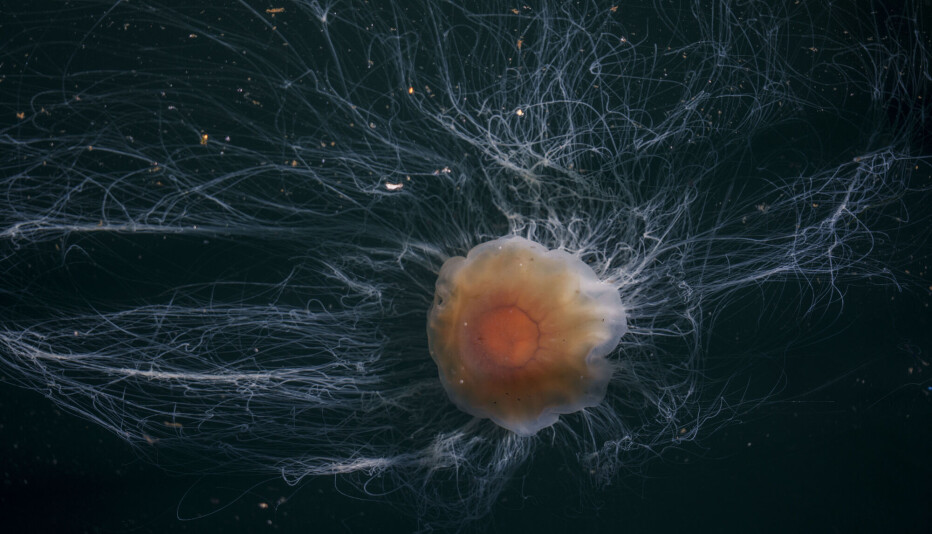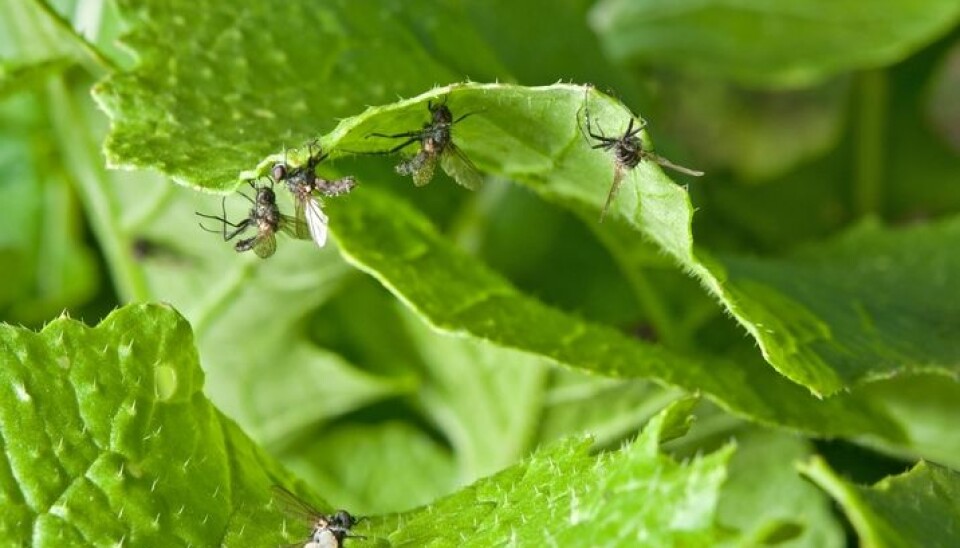
Pull, push and kill cabbage root flies
Cabbage root flies can devastate fields of cabbage and broccoli. But a clever defence has been developed using fungi, Chinese cabbage and clover.
Denne artikkelen er over ti år gammel og kan inneholde utdatert informasjon.
Cabbage root flies lay their eggs on cabbage plants. This is unsettling for farmers and backyard gardeners, because the fly does heavy damage to broccoli, cauliflower, rutabagas and various types of cabbage.
Adult flies lay their eggs by the cabbage roots and when they mature as maggots they eat their way through and destroy the plant. Cabbage root flies are found throughout Norway in vegetable beds and larger fields.
Ingeborg Klingen is a researcher at the Plant Health and Plant Protection Division of Bioforsk, the Norwegian Institute for Agricultural and Environmental Research. Bioforsk scientists operate on a broad front to find new methods for fighting pests. Their research focuses on methods that don't include chemicals and pesticides.
Cabbage root flies have previously been fought with phosphorus compounds, which were banned in Norway in 2008. Now only cabbage seeds can be treated with chemicals, otherwise there are no legal chemical pesticides that can kill the flies or their voracious offspring − cabbage maggots.
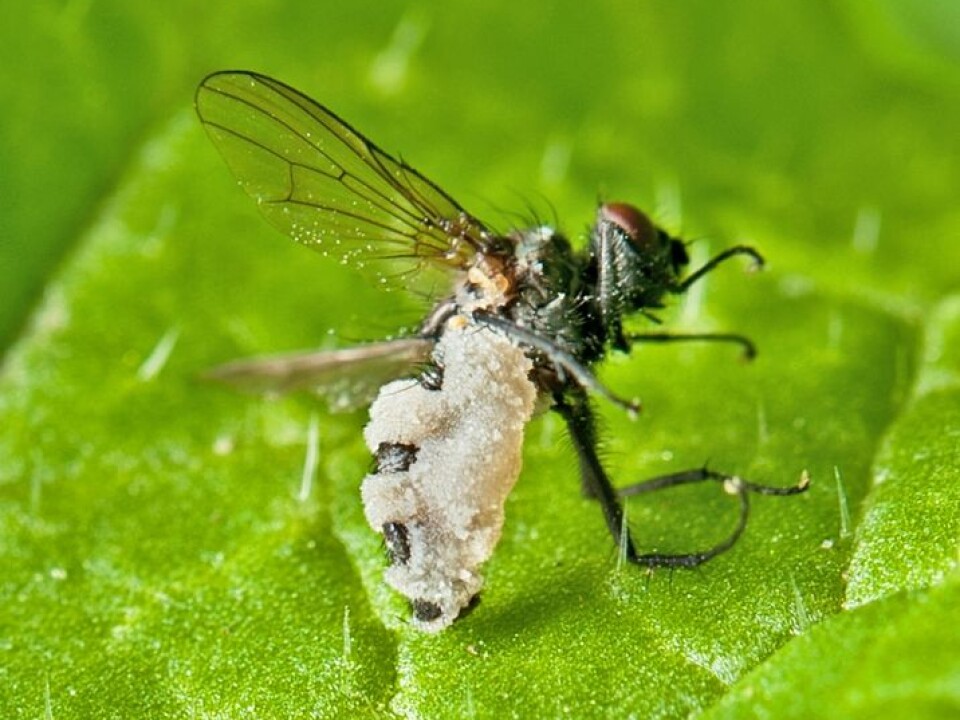
So researchers and farmers are struggling to find new and effective methods for combatting the flies. Klingen works especially with fungi as a defensive weapon.
Fungi fights flies
Useful fungi are found in nature, either on insects living in the ground or on plants. A fungus can infect and kill insects and mites, thus reducing quantities of pests.
“We’ve developed a method for cabbage root flies we call push, pull and kill,” explains Klingen. “It involves a deliberate use of various plant species to manipulate the flies as well as cultivating a fungus so cabbage root flies lay fewer eggs and more of the flies are killed.”
The fungus Entomopthora muscae is a natural enemy of cabbage root flies. When infected by it they get sick and pass it on to others of their species.
But the fungi aren’t always sufficiently present to wipe out the flies at the right time. Klingen and her colleagues have developed a method to rectify that problem.
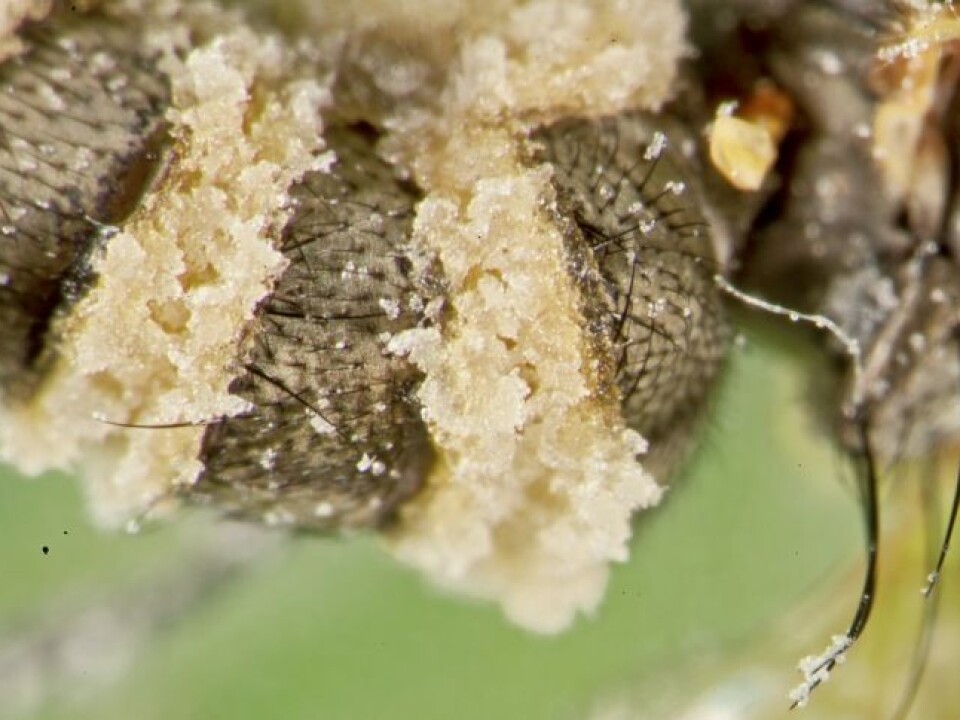
“We sought to increase the spread and occurrence of the fungus so that it could effectively exterminate the cabbage root flies,” explains Klingen.
Push, pull and kill
The method is as follows:
First you plant red clover in the bed or field where you cultivate, for instance, broccoli.
The clover confuses the flies – it gets harder for them to find the broccoli, which is their natural medium for egg laying. So the flies are pushed away from the broccoli.
Then you plant Chinese cabbage on the edges of the bed as a trap crop. The Chinese cabbage is more attractive than the broccoli, so the flies are attracted or pulled in its direction.
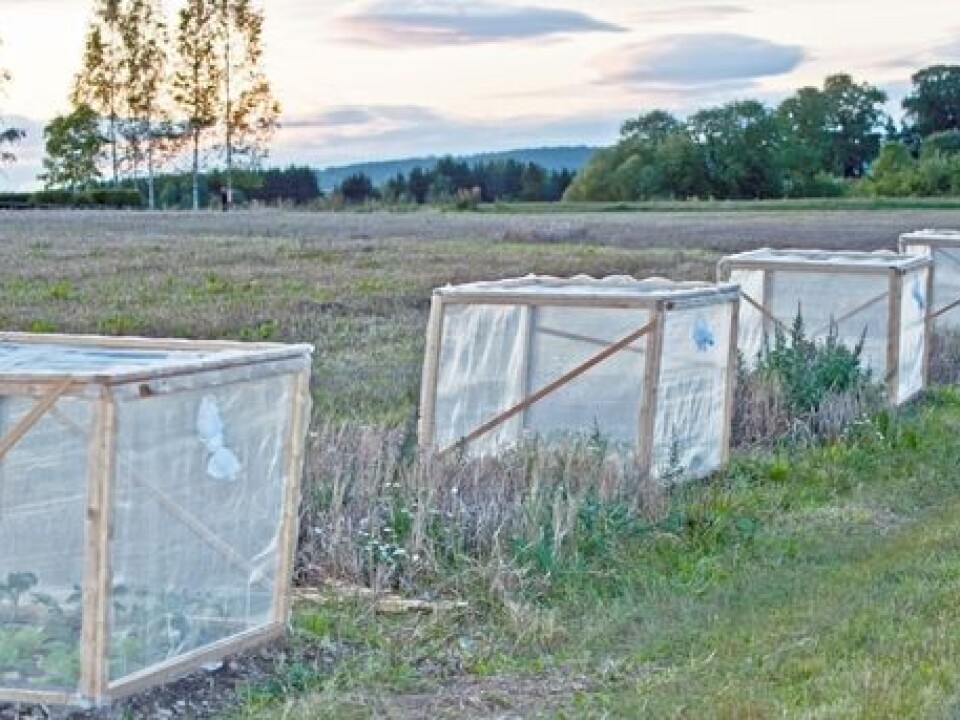
The helpful fungus grows on the Chinese cabbage, and it kills the flies.
The fungus is found naturally on Chinese cabbage but the gardener or farmer can also add some more.
Spiral of death
Because the Chinese cabbage plants become sites where the flies congregate, more eggs are deposited on them. So more of the fungus is spread here and more flies get diseased and die. The epidemic has struck.
You can increase the amount of fungi and escalate and accelerate the epidemic by picking up dead flies and placing them back on the Chinese cabbage.
“But be quick about it if you see a dying fly. The corpses can only contaminate for 24 hours after they die,” says Klingen.

Once you have increased the amount of fungi and initiated this wholesale slaughter, you can lean back and relax during your vacation. The epidemic will rage for weeks according to Klingen.
Sick and healthy flies want the Chinese cabbage
This method has been tested by the researchers at Bioforsk. The results are promising, although Klingen says work is still underway to find the ideal distances between the various plant types.
But amateur and professional cultivators can try this out on their own by looking for flies infected by the fungus and experimenting with different distances from their vegetables to clover and Chinese cabbage.
Klingen and her colleagues have been testing the strategy with fungi, cabbages and dead flies for years. They started with small experiments in acclimatised rooms inside their lab and then started experimenting outdoors.
They studied ways the clover affects the flies, whether the cabbage root flies really preferred to deposit their eggs on Chinese cabbage instead of broccoli, and how the fungus contamination spread.
They were particularly interested in finding out whether the diseased, fungus-infected flies made the same choices as the healthy flies.
The results were clear: both the healthy and the diseased flies preferred Chinese cabbage, especially when the broccoli was sown along with clover.
But what if someone eats this Chinese cabbage, would they be impacted?
“The fungus is only harmful to the flies, not to humans,” says Klingen. But she adds that the Chinese cabbage gets heavily attacked by the cabbage root flies and their maggots so these wouldn’t be very tempting to eat.
That’s easy advice to follow. Who wants to eat Chinese cabbage that has been a furious battleground between fungi and flies?





















